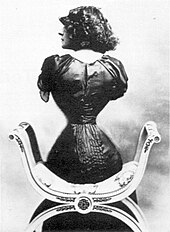
Champigny-sur-Marne is a major city in the region of Île-de-France, France. It is located 12.5 km (7.8 mi) from the centre of Paris.

Vanessa Chantal Paradis is a French singer, model and actress. Paradis became a star at the age of 14 with the international success of her single "Joe le taxi" (1987). At age 18, she was awarded France's highest honours as both a singer and an actress with the Prix Romy Schneider and the César Award for Most Promising Actress for Jean-Claude Brisseau's Noce Blanche, as well as the Victoires de la Musique for Best Female Singer for her album Variations sur le même t'aime. Her most notable films also include Élisa (1995) alongside Gérard Depardieu, Witch Way Love (1997) opposite Jean Reno, Une chance sur deux (1998) co-starring with Jean-Paul Belmondo and Alain Delon, Girl on the Bridge (1999), Heartbreaker (2010) and Café de Flore (2011). Her tribute to Jeanne Moreau at the 1995 Cannes Film Festival during which they sang in duet "Le Tourbillon" became notable in French popular culture. In 2022, she was nominated for the Molière Award for Best Actress for her performance in the play Maman.

Sylvette Herry, known professionally as Miou-Miou, is a French actress. A ten-time César Award nominee, she won the César Award for Best Actress for the 1979 film Memoirs of a French Whore. Her other films include This Sweet Sickness (1977), Entre Nous (1983), May Fools (1990), Germinal (1993), Dry Cleaning (1997) and Arrêtez-moi (2013). In her career she has worked with a number of international directors, including Michel Gondry, Bertrand Blier, Claude Berri, Jacques Deray, Patrice Leconte, Joseph Losey and Louis Malle.

Annie Suzanne Girardot was a French actress. She often played strong-willed, independent, hard-working, and often lonely women, imbuing her characters with an earthiness and reality that endeared her to women undergoing similar daily struggles.

Jeanne Roques, known professionally as Musidora, was a French actress, film director, and writer. She is best known for her acting in silent films, and rose to public attention for roles in the Louis Feuillade serials Les Vampires as Irma Vep and in Judex as Marie Verdier.
Christine Boisson is a French actress.
Events from the year 1939 in France.
Events from the year 1874 in France.
Émilie is a French female given name. It is the feminine form of the male name Émile.

The Val-de-Marne's fifth constituency is a French legislative constituency in the Val-de-Marne département.

Eugénie Buffet (1866–1934) was a French singer who rose to fame in France just prior to World War I. She has been called one of the first, if not the first, performer of the chanson réaliste genre. She became a national sensation in France, performing in the fashionable cafés-concerts of Paris as well as embarking on both national and international tours. Her biggest success is said to be her performance of the song "La Sérénade du Pavé", written by Jean Varney in 1895. She was also known to perform in the street for charity in the poorer areas of Paris – work for which she was awarded the Légion d'honneur.
Marianne Oswald was the stage name of Sarah Alice Bloch, a French singer and actress born in Sarreguemines in Alsace-Lorraine. She took this stage name from a character she much admired, the unhappy Oswald in the Ibsen play Ghosts. She was noted for her hoarse voice, heavy half-Lorraine, half-German accent, and for singing about unrequited love, despair, sadness, and death. She sang the songs of Kurt Weill and Bertolt Brecht. She was friends with Jean Cocteau, Jacques Prévert, François Mauriac, and Albert Camus. In fact, the text for one of her album covers was written by Camus. She was an inspiration for the composers Francis Poulenc and Arthur Honegger.

Zahia Dehar is an Algerian-French model, actress and former sex worker.

Emma Liébel was a French chanteuse. She was one of the pioneers of the chanson réaliste style.

Claire Démar (1799–1833), was a feminist, journalist and writer, member of the Saint-Simonian movement. The avant-garde nature of her writings has led to her current recognition.

Bruno Wolkowitch is a French actor.
Liliane Marchais was a French communist activist.
Danièle Brun was a French academic and psychologist. She was a member of the Espace analytique.

Mathilde Larrère, born in Paris is a French historian and activist. She is a specialist in revolutionary movements and policing in 19th century France.

Marion Barbeau is a French ballerina and actress.
















